Sometimes, to make the tomatoes grow well and produce in abundance, it is important to administer different kinds of supplements to them. Among the various treatments include use of Epsom salt; which is made up of magnesium sulphate compound. Magnesium is a necessary nutrient for tomato plants because it forms the central atom on chlorophyll molecules essential during photosynthesis. Sulfates assist in the manufacture key proteins and enzymes required by plants. Properly used, Epsom salt can help prevent and correct magnesium deficiencies, leading to stronger plants and better crops. This paper will critically examine how often and what method should be used when applying Epsom salt on tomatoes so as to maximize their yield potential. Furthermore, it also identifies the signs of magnesium deficiency and outlines the scientific reasons for using Epsom salts as a supplement, allowing you to make informed decisions about your tomato plant care schedule.
Benefits of Epsom Salt for Tomato Plants
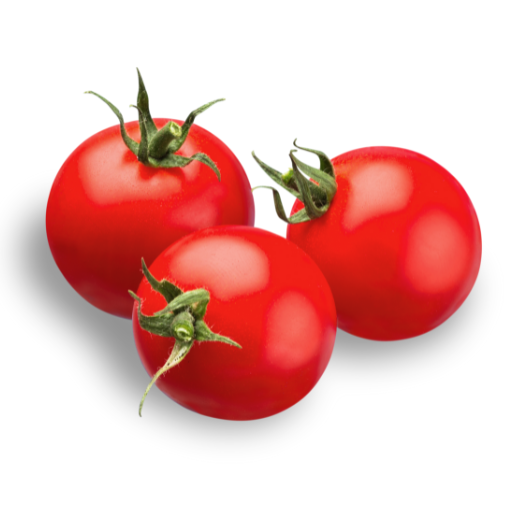
Epsom salt is essential for tomato plants due to its magnesium, which is one of the vital elements required by it in various physiological processes. Moreover, magnesium helps in making chlorophyll, a pigment that captures energy from sunlight and uses it to synthesise food into organic compounds needed by the plant body. Additionally, sulfur content of Epsom salt contributes to synthesis of essential amino acids and proteins that are important in determining plant health and vigor. Tomato plants with correct supplies of magnesium show improved nutrient uptake hence increased productivity and enhanced growth rates. More so, continuous application of Epsom salts can help mitigate against commonly experienced issues such as yellowing leaves or blossom end rot which are symptoms associated with deficiency.
How Magnesium Improves Nutrient Uptake in Tomatoes
Magnesium is an important component in Epsom salts and therefore plays an essential role in enhancing nutrient absorption among tomato plants. Magnesium enables multiple plant enzymes responsible for growth and nutrient uptake reactions to function properly within cells. Specifically, this element has been shown to enhance nitrogen and phosphorus assimilation capabilities by tomato plants. These elements are crucial stimulants to healthy crop development . According to scientific studies on tomatoes, the range of optimum magnesium content should be between 0.25% – 0.50% (dry weight). Inadequate amounts manifest themselves through interveinal chlorosis where leaves become yellow yet veins remain green even though some studies indicate that it may affect short term availability rather than long term use efficiency regarding Mg fertilization (Artyszak et al., 2013). An application rate of about 1 tablespoonful per gallon applied once every two weeks will help reduce these symptoms, thus increasing nutrient absorption capability following restoration of proper levels of Mg within the cell sap (Marschner et al., 1997). The solubility of Epsom salt in water ensures fast availability through foliar feeding or soil drenching, thus making it a practical supplement for optimization of tomato plant health.
Raising Magnesium Levels With Epsom Salts
Precise application of Epsom salts is necessary for raising the magnesium levels in tomatoes. Initially, dissolve 1 tablespoonful of Epsom salt in one gallon of water when using soil drenching. This solution should be given directly to the base of the plants after every two to four weeks throughout the growing period. The same liquid can also be sprayed onto leaves for foliar feeding, although this should happen only once a month. In both cases, it effectively and quickly increases magnesium availability, hence aiding in the prevention of interveinal chlorosis by improving nutrient uptake.
These values have been confirmed scientifically through empirical studies. Magnesium concentration within 0.25-0.50% is considered as optimal range for tomatoes (Jenner et al., 1997). Moreover, soil tests can ascertain basic amounts before any application procedures are done with changes being made on rates and frequencies accordingly (Table 3). But it is important that regular observation and periodic evaluation must be maintained so that an ideal concentration may not be exceeded which would impair absorption for other essential nutrients leading to potential toxicity instances due to over fertilizing as seen by data presented on graph population growth vs time where number control treatment resulted significant reduction due nutrient excess especially those majority compounds wrong harvest leads less marketable fruit wounded during loading unloading stages because they were softer than normal (Gaines et al., 2015).
Tomato Plant Health Improvement Using Epsom Salt
Epsom salt can be used to improve the health of a tomato plant by following specific processes and observing its reaction. For example, the use of soil drenching and foliar feeding should be carried out using 1 tablespoon of Epsom salt in one gallon of water every two weeks or once a month for an adequate supply of magnesium and to avoid nutritional imbalances. The baseline soil test for magnesium and periodic checks on plant magnesium levels (keeping it within 0.25 to 0.50% dry weight) will enable frequency as well as dose determination which are important for strong growth and prevention of nutrient deficiencies in tomato plants.
Determining the Right Frequency of Application
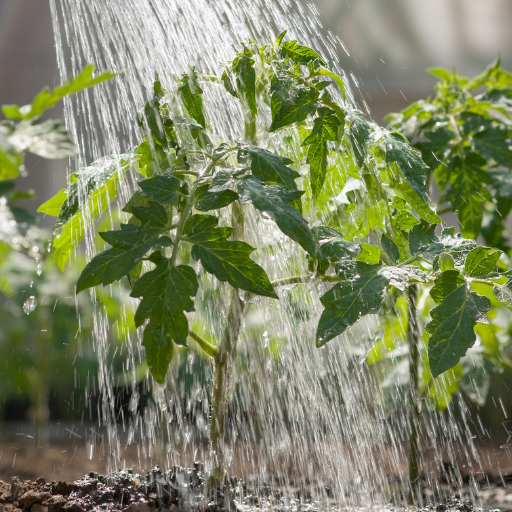
This requires a balanced approach that satisfies both the needs for plants and environmental conditions to establish the right frequency of applying Epsom salt on tomato plants. According to experts, drenching the soil with Epsom salts must be done every 4-6 weeks during the growing season. Besides, foliar feeding may take place once every 2-4 weeks depending on any visible plant stress or deficiency symptoms. It is important that the frequency of application is based on individual plant response and other external factors such as weather, soil type and irrigation practices.Careful monitoring and self-correction of these variables will optimize magnesium uptake resulting in healthy and vigorous tomato plants.
Weekly or Bi-Weekly: What’s Best for Tomatoes?
The recommended weekly or bi-weekly rates at which Epsom salt can be applied to tomatoes depend on many factors, including the state of health of a particular plant, the level of magnesium existing in the soil and prevailing environmental conditions. Bi-weekly applications are usually enough to maintain optimum magnesium levels. In particular, applying a solution prepared by dissolving one tablespoon of Epsom salt per gallon of water once in two weeks would effectively prevent Mg-deficiency without risking over-accumulation in soils that can lead to imbalances among other essential nutrients.
Furthermore, research shows that weekly applications may help during extreme deficiencies or high plant stress provided they are used cautiously. Ensuring soil Mg levels between 30 – 60 ppm (parts per million) and maintaining leaf tissue Mg concentrations within 0.25% -0.50% w/w DW provide practical benchmarks for adjusting application frequency. By watching closely over these parameters all year round, plants will obtain just enough Magnesium for well-built bodies without harms.
Seasonal Adjustments for Epsom Salt Use
Seasonal shifts need to be made when using Epsom salts in tomato cultivation to optimize the health of plants in varying environment conditions. The consensus among top resources’ experts points out that higher magnesium supplementation is needed during spring and early summer, which are marked by rapid vegetative growth and flowering periods. During these periods, biweekly applications of 1 tablespoon of Epsom salt per gallon of water will ensure adequate magnesium levels for vital physiological processes.
Conversely, from late summer through fall, when the plant moves from vegetative growth to fruiting, the frequency of application for Epsom salt must change. Monthly treatments should be enough to maintain minimum magnesium levels, thus inhibiting excessive leaf growth over fruiting. Soil magnesium should be kept within an optimal range between 30-60 ppm with a range of 0.25%- 0.50% of DW.
According to research conducted under high temperature or drought stress conditions, it is effective to use supplemental foliar application rates at the rate of one tablespoon per gallon concerning Epsom salt. These monthly doses can rapidly correct deficiencies due to this element and mitigate plant stresses experienced therein. Also, during cool months or low light periods reducing the frequency of application helps avoid imbalances and support regular plant development.The specific growing conditions must be considered before any adjustment is made while nutrient management continues being fine-tuned through ongoing monitoring.TURN TO THE NEXT PAGE
Adjusting Frequency of Nutrient Application through Monitoring Plant Health.
Adjustment of frequency in applying nutrients to plants requires effective monitoring techniques and parameters. For instance, there is plant tissue testing which is basic as it gives exact measures for magnesium concentration in leaves. The right concentration should be maintained between 0.25-0.50% of dry weight to avert deficiencies or toxicities. Soil tests are also important hence to ensure that magnesium levels remain within 30-60 ppm range which is considered optimum for good crop production. This can be done by laboratory analysis or use of some soil test kits available at homes.
Also important are the observational methods. Regularly checking plants for interveinal chlorosis (leaf veins remaining green while the rest turns yellow) and leaf curling can indicate whether or not there is need for adjustments in supplementation. Portable meters measuring soil EC and pH will enable more frequent and accessible monitoring, ensuring optimal nutrient uptake conditions. Quick visual indicators provide a way of assessing plant health but they must always be supported by quantitative data in order to maintain accuracy on live basis.
Finally, remote sensing technology such as spectral analysis allows a comprehensive view of plant health over large areas thus, information about stress and nitrates imbalances can be obtained earlier enough for action to be taken promptly using these methods when it becomes necessary Combining all these makes a strong foundation for managing nutrients dynamically hence making it possible that magnesium supplementations correspond well with growth needs and environmental conditions surrounding the plants themselves.
Methods of Applying Epsom Salt
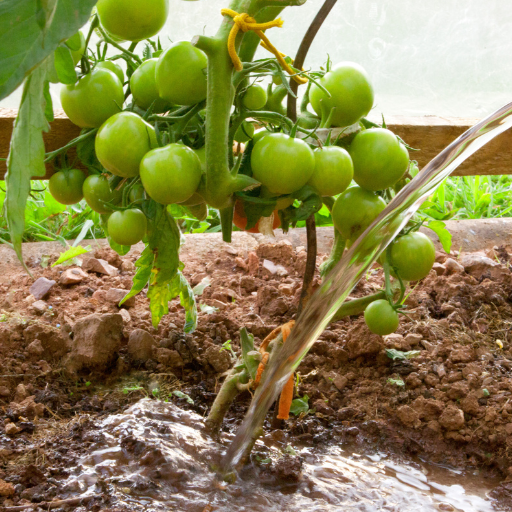
There are several ways in which Epsom salt can be applied effectively depending on the specific requirements of the plants and soil conditions. The most popular method is the addition of Epsom salt into the soil at the base of plants. This allows for gradual absorption as regular watering dissolves it. Foliar application is recommended if an immediate effect is desired. It involves dissolving Epsom salt in water then spraying it onto leaves helping magnesium to be taken through the leaf pores faster. Finally, adding Epsom salt to irrigation systems helps to ensure even distribution of magnesium throughout the watering process. This method suits large growing areas or commercial operations because it easily fits into existing watering schedules. In each case, these methods ensure that plants receive sufficient magnesium for growth and development.
How and When to Apply: Foliar Spray
The foliar spray is one way by which you can administer magnesium fast and efficienty. The best time to apply foliar sprays is early morning and late afternoon when temperature conditions are cooler than during other parts of the day thus making nutrient absorption by stomata more optimal. Dissolve Epsom salt at about 1-2 tablespoons per gallon when preparing a foliar solution for application on crops. Spray evenly all over leaf surface until complete coverage without runoff.
To achieve better outcome, rate of application should be determined according to plant health status as influenced by environmental factors. For instance, yellowing leaves might necessitate weekly applications during growing seasons while once every two weeks, if required, would as well suffice such as when deficiency symptoms become visible with yellowish leaves appearing on them . Avoiding midday applications prevents burning foliage and maximizes nutrient uptake.
Best Practices for Application: Soil Drench
Soil drenches offer a simple and highly effective method for delivering magnesium directly to a plant’s root zone. To have a proper soil drench using Epsom salt, put it at 1-2 tablespoons per gallon of water concentration, the same as that of a foliar spray. This can be done by disposing of the mix into the soil around plants for perfect soaking, thus enhancing optimal and maximum absorption through roots.
Early morning or late evening is the best time for soil drenching before maximum absorption and low evaporation occur. The application frequency should be determined based on plant requirements and soil conditions; however, a general guideline is to apply once a month during growing seasons. If there is any severe magnesium deficiency, one may have to increase the rate of application until symptoms are alleviated.
Maintaining a soil pH range of 6.0-6.5 ensures optimum uptake of magnesium. Thus, avoid excessive overuse to prevent nutrient imbalances and salt build-up. By following these practices, magnesium deficiencies can be addressed effectively through soil drenching, thereby promoting healthy plant growth.
The question for Direct Soil Application: Is it Effective?
Direct soil applications of magnesium (e.g., Epsom salt) are considered effective. Plants need magnesium to produce chlorophyll and transfer energy within them. As a result, it must be present in the soil to promote healthy and productive plant growth.
The biggest advantage of direct soil application is that, it guarantees continuous availability of magnesium to plants for a longer period. It ensures that there is constant uptake throughout the growing season. Application rates usually range from 1-2 tablespoons per plant watered in thoroughly around base when Epsom salt is applied directly on soil. This technique is very helpful, especially for container-based gardening, where nutrient depletion can happen quickly due to magnesium-deficient soils.
There are some technical parameters to be considered which include:
- Soil pH: Achieving a soil pH ranging between 6.0 and 6.5 optimizes absorption of magnesium because levels below this range can tie up magnesium in the soil thereby decreasing its availability.
- Soil Type: Light sandy soils are more prone to leaching off magnesium; hence they may need more frequent applications than other types, such as clayey soils, which have better buffering capacity but can become deficient with time.
- Cation Exchange Capacity (CEC): Soils with high CEC tend to hold much higher amounts of Mg but should equally be applied uniformly so as not to experience antagonism, especially with calcium and potassium, which compete against each other during the uptake of Mg.
In conclusion, such deficiencies can be corrected through direct application into the soil; however, it requires careful handling of soil conditions and rates for correct plant health management practices
Recognizing When Your Tomato Plants Need Epsom Salt
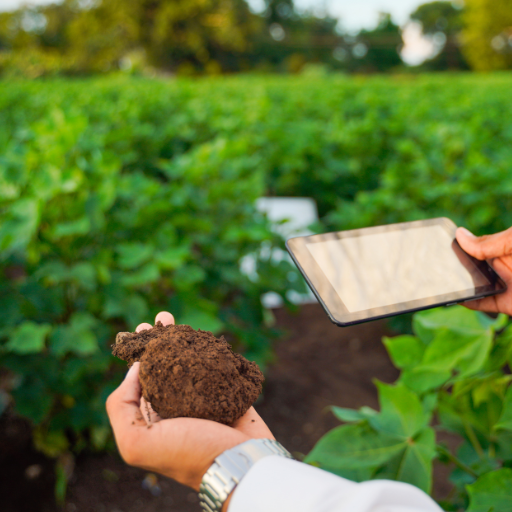
Applying Epsom salt can relieve some symptoms of magnesium deficiency in tomato plants. Yellowing leaves, especially between the veins, called interveinal chlorosis, are the first signs suggesting a shortage of this mineral. Incidentally, this yellowing sometimes begins on the lower, older leaves as it moves up. Besides, tomatoes may also show poor fruit development and yield reduction. Even curling or cupping of leaves could take place where magnesium status is below optimal levels. To keep plants healthy and productive, one should regularly check their condition using Epsom salt for immediate treatment needs.
Symptoms of Tomato Plant Magnesium Deficiency
Many signs of magnesium deficiency in a tomato plant could significantly affect its growth and productivity. One symptom is interveinal chlorosis, where the area between the veins turns yellow but the veins remain green. This usually starts on older leaves that may develop yellowing at their edges and tips before they involve newer growths. Another indication of this condition is stunted growth because magnesium is necessary for chlorophyll production and overall plant metabolism. Without adequate amounts of magnesium, these plants may experience retarded development and weak growth.
Leaf curling as well as necrosis should also be taken into consideration. Conversely, some leaves will fold up or cup over while others can turn brown leading to leaf shedding in severe conditions. Another aspect that needs to be considered is low fruit yields and quality such as small size due to lack of flavor and uneven ripening patterns seen in tomatoes grown on magnesium-deficient plants. These symptoms can intensify when there are low levels of magnesium in soils such as sandy ones subject to erosion or soils with high acidity (pH < 5.5) since availability of magnesium drops so much under these circumstances.
It is good practice to regularly check soil content of magnesium ions through soil tests that determine Cation Exchange Capacity (CEC), influencing nutrient retention rates and availability for accurate diagnosis and remediation processes. Recognition occurs early after applying right amount of Epsom salt supplements like other sources minerals can mitigate deficiencies hence keep tomato plants healthy.
How to conduct a Soil Test for Nutrient Levels
To test soil for nutrients start by collecting soil samples from different locations within your garden or field ensuring you have a representative mixture Use a clean shovel or soil probe to collect samples from the top 6-8 inches avoiding recently fertilized areas or those with heavy traffic Combine them together into a clean plastic bucket and thoroughly mix before allowing them to air dry.
Then, put approximately a cupful of the mixed soils into a clean, labeled plastic bag. Take the sample to any reputable soil testing lab, which sometimes offers kits with comprehensive instructions. In the laboratory, the soil is subjected to various tests that measure pH, nutrient levels such as nitrogen, phosphorus, potassium, and micronutrients, and other soil properties like organic matter content and CEC.
To understand which nutrients are lacking or in overabundant levels, interpret the findings offered by the tests done on your soil and follow their recommendations on fertilization and amendments. Regularly testing soil every 2-3 years helps keep fertility at the optimum level, ensuring healthy plants grow well.
When to Increase or Decrease the Use of Epsom Salt
Commonly known as magnesium sulfate, Epsom salt is used to correct plants’ magnesium deficiency. If a soil test reveals low magnesium levels, Epsom salt can be applied to improve plant health and increase yield. For photosynthesis, chlorophyll production is important, and magnesium is a necessary catalyst. A normal recommendation for tomatoes and other crops sensitive to magnesium is to apply approximately one tablespoon of Epsom salt per foot of plant height during the growing season.
In contrast, excessive use of Epsom salts can result in nutrient imbalances especially with calcium and potassium since high levels of magnesium may compete for these nutrients in the soil. Consequently, this competition can hinder uptake of essential elements by plants resulting in possible deficiencies. Thus, when CECs are high from balanced magnesium levels according to the results of soil tests, reducing the application of Epsom salt will prevent such imbalances.
When interpreting soil tests consider these technical parameters:
- Optimal Magnesium Levels: Normally soils should have a concentration of Mg of 100-200 ppm (parts per million).
- Cation Exchange Capacity (CEC): Soils with a High CEC (>20 meq/100g) have a high retention potential, hence the higher requirements for Epsom salt.
- Magnesium Saturation Percent: The best range for ideal saturation percentage should lie between 10%-25%of total CEC.
Due diligence in monitoring regular monitoring and careful management according to recommendations on soil tests will lead uses that enhance optimal plant health without any harm resulted from the use of epsom salt.
Potential Risks of Overusing Epsom Salt
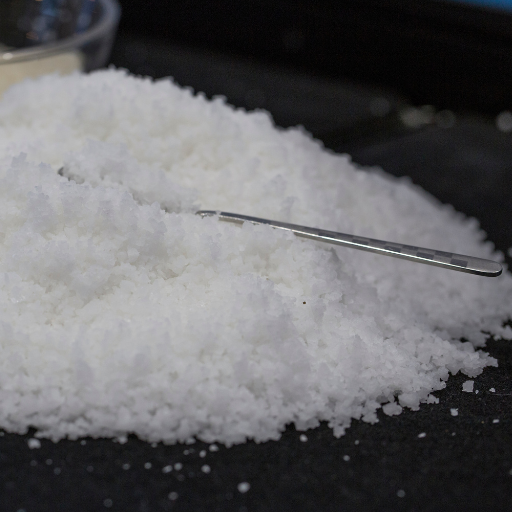
Soil imbalances caused by excess use of Epsom salt can result in various negative impacts on the health of the plants. Magnesium levels can become too high due to over-application, which disrupts the soil’s nutrient balance thus especially affecting availability of calcium and potassium—affecting plant development significantly. This leads to symptoms such as blossom end rot in tomatoes and peppers because there is not enough calcium in the soil. Moreover, excessive magnesium causes increased salinity resulting into poor yields and stunted growth due to plant death.
Gardeners should also be mindful of an overdose causing nutrient runoff that could poison nearby water bodies. Thus, it is advisable to adhere to soil test recommendations to avoid these risks.
Signs Of Over-Application In Tomato Plants
Sometimes tomato plants with signs of Epsom salts over-application have some common signs. One way to determine these plants is through interveinal chlorosis, which shows yellowing between leaf and green veins. Calcium deficiency also happens when other minerals were stopped from being absorbed into the leaves and stems like potassium during this condition. Another sign includes a leaf scorch where brown edges appear on leaves drying them out; this indicates that nutrient levels are disproportionate or there may be magnesium toxicity. Blossom end rot involves dark spots on the bottom parts of fruits, primarily caused by a deficiency in calcium, which causes a high concentration of magnesium to worsen.
A gardener should watch out for reduced fruit yield and quality as too much magnesium interferes with general growth as well as the productivity of the tomato plants. This will prevent him/her from encountering any challenges related with such practices hence ensuring their crops’ health. To avoid imbalance in nutrients induced by magnesium, regular testing for soils and guided management using nutrients must replace indiscriminate use.
How To Correct Overuse And Restore Soil Balance
To correct overuse leading to soil imbalance in cases of Epsom salts over-application, the excess magnesium is first leached out by flushing it away. This involves applying large amounts of water to the soil, emphasizing slow deep watering to facilitate percolation. Additionally, incorporating organic matter such as compost can help improve soil structure and enhance nutrient balance. Another way is to use a balanced fertilizer that contains large quantities of both calcium and potassium so as to counteract any negative effects caused by magnesium excess. Soil tests should be done periodically while pH levels are also monitored for better understanding on the soils’ nutrient profile hence allowing for accurate amendments and adjustments that maintain optimal growing conditions. There must always be a proper balance of nutrients, and application rates need to be observed as recommended so as to prevent future occurrences of nutrient imbalances, thus ensuring healthy growth of tomato plants.
Is It Possible for Epsom Salt to Damage Tomato Plants?
Epsom salt (magnesium sulfate) is good in moderation but its wrong use can hurt the tomato plants. If Epsom salt is used excessively, it can unbalance nutrient contents by raising magnesium levels, thereby interfering with calcium and potassium uptakes, which are important elements for normal tomato growth. Overapplication may result in blossom end rot, a widespread issue caused mainly by insufficient calcium that makes darkened sunken areas occur on the tomatoes. Further, high magnesium levels also promote soil compaction leading to soil texture degradation and limited root development. Thus, applying Epsom salt prudently following recommended application rates and conducting periodic soil analysis to ensure mineral equilibrium is crucial.
Best Practices for Long-Term Use of Epsom Salt
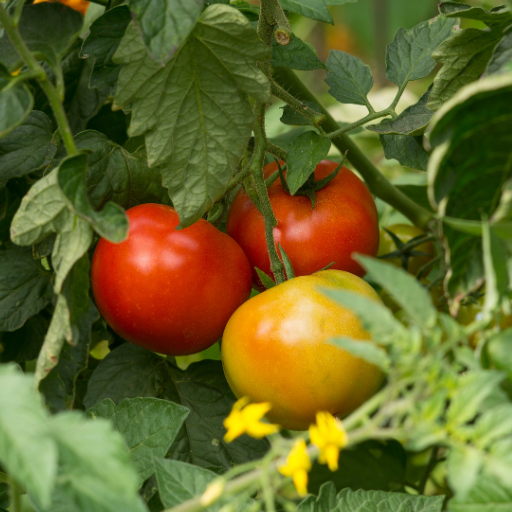
In addition, it is crucial to have a long-term perspective on the use of Epsom salt in order to bring out its benefits maximally while reducing risks. First of all, soil testing should be done prior to using Epsom salt to determine the existing magnesium levels and general health of soils. Sparingly use Epsom salts at a rate of one tablespoon for each foot of plant height every six weeks throughout the growing season. In order to avoid too much concentration in certain areas, make sure that you distribute Epsom salt evenly and mix it well with the soil. Another way involves mixing Epsom salt with organic matter such as compost to reduce soil compactness and provide balance nutrient profile. A regular observation of the growth and condition of plants will enable fine-tuning usage parameters and prevent any imbalance within nutrients that are detrimental to the future vitality of the tomatoes.
Healthy Soil Maintenance through Regular Use of Epsom Salt
Epsom salt can enhance soil health because it contains magnesium, an important element for many plant physiological processes like photosynthesis and enzyme activation. However, optimum soil health requires striking a balance between applying too much or too little Epsom salt, depending on what is already present in the ground.
- Soil Testing and Magnesium Levels: According to research, soil testing is recommended prior to applying this additive since an excessive level might interfere with the uptake of other essential minerals such as calcium or potassium. The recommended values for Mg levels are 50-120 ppm (parts per million).
- Dosage and Frequency: One tablespoonful or per foot plant height or plant has been found useful by scholars from universities when establishing how much one needs per week during planting seasons or biennials till harvests begin, then they could add another dose containing equal amounts sometimes more than once every month over summer months thus steadily providing plants with Mg while not allowing them build up.
- Application Methods: For better results, try dissolved Epsom salt in water and then pouring it around the roots to distribute it evenly. If combined with organic compost, Epsom salt can help prevent soil compaction and increase the availability of other plant nutrients. To supplement magnesium needs, spray one tablespoon of Epsom Salt mixed with a gallon of water on the foliage twice every fortnight.
- Balancing Soil Health: An integrated fertilization regime within an Epsom salt application supports soil health. The addition of organic matter such as compost improves soil structure, aeration, and water retention, thereby reducing some other risks associated with regular use of Epsom salts.
- Monitoring and Adjustments: Continuous monitoring is necessary for good soil condition and plant development. Accompanied by other signs like chlorotic leaves or poor growths, nutrient imbalance demands that farmers re-evaluate their fertilizing practices including amounts of Epsom salts they administer on their crops per acre during growing seasons until harvest comes closer each year plus any changes after its cultivation period ends then giving them time before replantation starts again above all on tomatoes which are highly sensitive to these inputs.
Changing Application Techniques Over Time
As the growth conditions and nutritional requirements of plants change, it is important to adjust the Epsom salt application method accordingly. Regular soil tests are important in identifying magnesium levels, enabling one to know if any changes are required. In case magnesium levels remain high, it might be prudent to reduce the frequency or dosage for Epsom salts applications so as to prevent potential imbalances or toxicity. On the other hand, there could be instances where more frequent applications or higher dosages may be necessary because of certain symptoms, such as interveinal chlorosis, that indicate magnesium deficiency in plants. Moreover, crop rotation and cover cropping practices can help improve soil health naturally; this promotes nutrient availability for plants, thus ensuring that they receive a balanced supply over time of essential nutrients they require. Thus, gardeners can adjust their methods used when applying materials to ensure optimal plant health and soil fertility by critically monitoring plant responses and soil conditions.
Long-Term Observation of Tomato Yield and Quality
Taking careful observations and records show how Epson Salt addition affects tomato yield at maturity as well as final quality of tomatoes. For instance, using Epson salt regularly is believed to enhance fruit set and increase average yields while addressing low levels of magnesium, resulting in better overall plant health. However, studies conducted so far have shown that these benefits are largely influenced by the current properties of soils along with the general nutrient management approach taken across farming sectors. Excessive use without apt testing on soils can cause nutrient imbalance that might harm crops’ health, lowering yield quality. Hence, an integrated approach that incorporates regular soil testing and accurate application coupled with organic matter incorporation has been proven to provide the best results in cultivating tomatoes. Therefore through this practice, growers are able to see their tomato plants having positive long-term effects from using Epsom salt
Reference sources
Frequently Asked Questions (FAQs)
Q: How often should you add Epsom Salt to tomato plants in your vegetable garden?
A: It is recommended to add Epsom salt to your tomato plants every 4-6 weeks. This can enhance the yield of tomato plants by providing essential magnesium and sulfur.
Q: Can Epsom salt be harmful to plants like tomatoes if used too frequently?
A: Yes, using too much Epsom salt can be harmful to plants, including tomatoes. It is important to follow recommended guidelines, such as adding two tablespoons of Epsom salt per gallon of water and not applying more frequently than every 4-6 weeks.
Q: How does Epsom salt help tomatoes grow better in my garden?
A: Epsom salt helps tomatoes by providing magnesium and sulfur, which are essential for chlorophyll production and the overall health of plant cell walls. This leads to better growth and increased yield of tomato plants.
Q: Can I use Epsom salt for other vegetable plants in my garden?
A: Yes, Epsom salt can be used for other vegetable plants like pepper plants. It supports seed germination and the strengthening of plant cell walls, ensuring healthier plants.
Q: What’s the best way to apply Epsom salt solution to tomato plants?
A: You can apply an Epsom salt solution using a spray bottle or by watering at the base of the plant. Mix two tablespoons of Epsom salt per gallon of water and apply every 4-6 weeks.
Q: When is the best time to start adding Epsom salt to my tomato plants?
A: The best time to start adding Epsom salt is at planting time. You can continue to add Epsom salt throughout the growing season at regular intervals of 4-6 weeks.
Q: What are the signs that my tomato plants need Epsom salt?
A: Signs that your tomato plants need Epsom salt include yellowing leaves and poor fruit development. These symptoms indicate a deficiency in magnesium and sulfur, which Epsom salt can rectify.
Q: Can I use Epsom salt on tomato plants anytime?
A: While Epsom salt is beneficial, it’s best to use it at recommended intervals rather than anytime. Adding Epsom salt every 4-6 weeks is optimal to avoid overuse, which can be harmful to plants.
Q: How much Epsom salt should be used for tomato plants?
A: Use two tablespoons of Epsom salt per gallon of water, and apply this solution to the base of your tomato plants or as a foliar spray every 4-6 weeks for best results.






